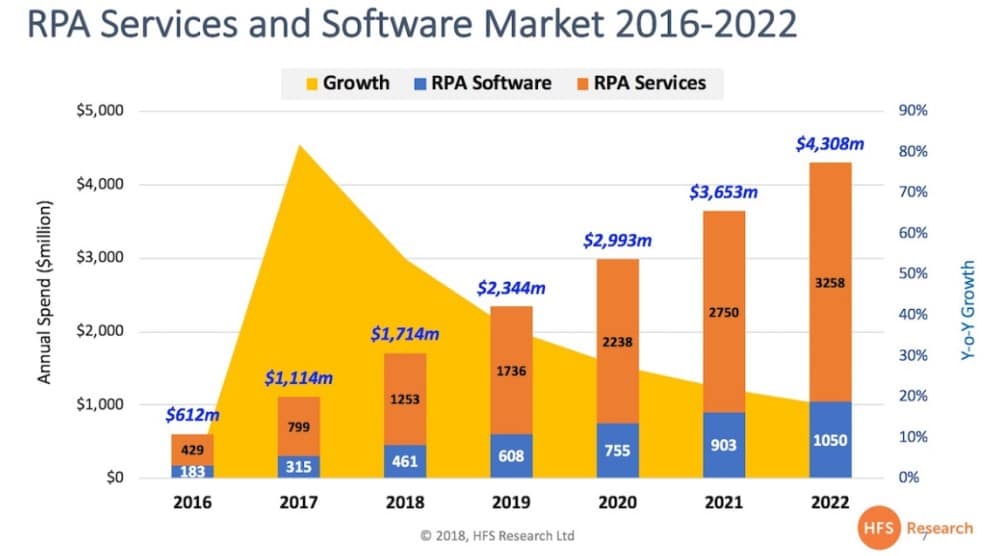Disruption from new technology is being felt across all industries and sectors. Advances in areas such as software, AI, and more are having a profound impact on how we do business. Contact centres are at the forefront when it comes to tech development. Many emerging technologies have found their initial uses in the industry.
In the third of RingCentral’s contact centre series, we’re going to look at the different tech that is taking hold. We’ll explore the areas where centres are investing in new solutions and innovations. We’re also going to consider how those technologies may affect the contact centre niche.
Primary Tech Trends for Contact Centres
The call centre industry is a rapidly evolving one. How centres manage their staff and how they interact with customers is changing. Those changes are in part due to new demands from customers. People now expect the ability to contact companies across a range of channels.
What drives the evolution of contact centres is the emergence of new technology. What follows are six tech trends that have made a significant impact. They’re also the emergent technologies that look set to reshape the niche in the coming years.
- Robotic process automation (RPA)
- Data analytics
- Systems, software & integration
- Chatbots & other real-time AI
- Cloud-based solutions
- Improved hardware
Robotic Process Automation (RPA)
Robotic Process Automation (RPA) is a tech trend that’s taking hold in many industries. In layman’s terms, RPA refers to the handling of basic, repetitive tasks by software or ‘bots’. RPA solutions are powered by AI and machine learning. They’re able to perform time-consuming processes and jobs in a fraction of the time of a human.
A good example is the processing of an invoice. Imagine a customer emails an invoice to a company. Via RPA, a bot can automatically pull an invoice attachment from an email. It can then transpose it into an Excel sheet, from which the data can get entered into all relevant systems. According to Deloitte, such automation can see the whole process completed 15x faster.

Source: Horse for Sources
According to HFS Research, the RPA market is a significant one that is growing apace. The global market reached a size of $1.7 billion towards the end of 2018. Projections by HFS based on that figure suggest that by 2022 total RPA revenue may be as much as $4.3 billion.
Contact centres were some of the earliest adopters of RPA technology. They’re environments where the benefits of RPA are numerous. Call centre agents traditionally manage many tasks aside from actual customer interactions. They include things like updating systems, inputting data, or performing post-call processing. It’s precisely these tasks that RPA can manage.
Handing off simple, transactional jobs to tech helps agents work more efficiently. They can focus on tasks that need “substantial cognitive power or emotional capacity”, as Nikola Mrksic from Poly AI puts it. They’re the kind of activities that only a human can handle.
FM Outsource is also excited about the potential of tech-driven automation. Jack Barmby, the Founder of FM Outsource, shared his view:
‘Let the tech do the legwork. The agent should be focussed on managing the customer…If it’s a repetitive task, an agent shouldn’t be doing it.’
Data Analytics
Data analytics in and of itself isn’t new in the call centre niche. Contact centres have long used the data generated via customer interactions to guide and direct operations. Data on call volumes and the like get used for forecasting and workforce management. Tracking metrics like on-call time is a well-practiced way of judging agent efficiency.
But the intelligence and scope of data analytics available to centres are what’s grown in recent years. The development of AI and especially machine learning, has been vital in this regard. AI-driven solutions can swiftly process and analyse vast volumes of data. Thanks to machine learning, they can identify patterns in that data and draw out useful insights.
Such AI-powered handling of data is known as ‘predictive analytics’. Predictive analytics is already being employed by some contact centres, but its uptake is likely to grow. The tech can deliver some notable practical benefits to contact centres. They include things like:
- Predicting future outcomes – Estimating the potential for sales to close or pointing out customers who may be about to abandon a brand.
- Identifying trends & their impacts – Finding patterns that suggest the reason for changes in customer demand or activity. For instance, analytics may find a cause of periods of higher call volume or longer call times. Centres can then predict when these things will happen again in the future.
It’s becoming more critical for firms to develop a data-driven customer experience. Utilising such adata allows firms to deliver the swift, personalised service consumers now expect. That’s why smarter, tech-driven analytics is set to remain an area of particular interest to contact centres.
Systems, Software & Integration
Aside from AI, call centres also employ many other cutting-edge solutions. Yes, firms in the niche use an array of contact systems, platforms, and other software. Developing these kinds of solutions is another area of interest for contact centres. As is finding the best way to integrate the diverse, disparate systems the centres use.
Contact centres are increasingly investing in more complex contact systems. Such systems incorporate elements like smart desktops, automated routing, softphones, and more. The idea of such solutions is to allow agents to help customers as efficiently as possible. Precisely what that means differs from one business and their customer base to the next.
Not all contact centre businesses custom build their own contact systems. Investment in software and means of integrating software platforms is high industry-wide, however. Cymphony, for example, needs a software solution that can work across more than 50 different CRM platforms. Having a solution that can work across systems is an understandable priority.

Chatbots & Other Real-Time AI
In the first post of this series, we explained how the term “contact centre” is often more apt than “call centre”. For you see, agents interact with customers via many diverse channels these days. And speaking on the phone is only one of them. The introduction of chatbots as a new channel is another tech trend in the contact centre niche.
Many businesses have introduced chatbots as a new method of customer support. The software solutions, powered by conversational AI, can simulate human interaction. Take the ‘live chat’ or ‘web chat’ options offered by many websites. A customer can often hold a text chat with a ‘bot’ rather than a human to get answers to simple questions. Thanks to machine learning, those bots can ‘understand’ queries and deliver the relevant replies.
They’re also useful solutions for straightforward support processes, like resetting passwords. Nikola at Poly AI feels chatbots used in that way can often give a better experience than an agent.
The extent to which chatbots could impact the contact centre niche is hotly debated. In 2011, Gartner predicted that by 2020, 85% of customer service interactions would get powered by AI bots. That hasn’t proved correct. Such bots do get widely used to support human agents, though, as do other real-time AI solutions.
Now, real-time language analysis is one of the most exciting of those types of solutions. It’s an area of AI in its infancy but could prove invaluable to call centres. The tech works by “listening” to conversations between an agent and caller. AI then enables the solution to assist the agent. That may be by accessing relevant info. It could even extend to helping the agent recognise when a caller gets frustrated or angry.
Cloud-Based Solutions
Migrating to the cloud is another trend in tech investment in the contact centre niche. A recent State of Customer Experience study found that 39% of centres are already cloud-based. Meanwhile, 53% of businesses surveyed planned to make a move to the cloud in the next three years.

Source: West UC
There are a range of reasons why many centres are switching to cloud-based solutions. Some of the most notable are as follows:
- Deployment & Flexibility – It’s quicker both to establish and to grow or adapt a cloud-based call centre system. The on-premises alternatives have a lot of physical infrastructure. With a cloud-based solution, centres can scale and change with ease. Cloud-based solutions, too, are vital for allowing home working. That’s something we’ll look at in more detail later in this series.
- Reliability – On-premises systems are less resilient to disasters. If there’s a power failure, a centre reliant on such a system will suffer a period of downtime. A system hosted in the cloud can get accessed from anywhere. Agents can log on and work from home or elsewhere, to overcome any issues.
- Return on Investment (ROI) – A final reason contact centres invest in cloud-based solutions is because the expense pays off. Ongoing costs for on-premises solutions are often higher than cloud-hosted alternatives. Hardware and infrastructure have to get replaced and maintained. Scaling or changing physical systems is also trickier and more expensive.
Improved Hardware
With all the talk of AI and other smart software solutions, it’s easy to forget good old hardware. Upgrading the equipment that agents use can have a real impact on the efficiency of a contact centre. Many firms in the niche invest a lot in kit like wireless and noise cancelling headsets or superior computers to run the many necessary software solutions.
David Rolf at Cymphony explained to us that noise cancelling headsets were one of the firm’s most significant tech investments in 2019. Such headsets shut out the ambient noise of the contact centre and make it easier for agents to concentrate on their callers.
Cutting-edge headsets also boast improved range as well as noise cancelling capabilities. Those features keep agents mobile in the contact centre without compromising call quality. Mobile advisors can find any documentation they may need or get help from colleagues.
Such capabilities may seem of minimal importance. In practice, though, they can raise productivity considerably. Agents handle the more complex enquiries for which automation isn’t suitable. Those enquiries often need input from many sources – both informational and human. Hardware that makes it easier to get that input can make a real difference.
Tech & The Contact Centre – Revolution or Evolution?
The contact centre niche and technological advancement are inextricably linked. Centres forever search for new tech to improve both agent and customer experience. Some have wondered if automation and AI may change the face of call centres irreversibly. Others have predicted that the new tech might replace human agents altogether.
Those who work in the industry disagree. The experts we spoke to see modern tech as a way of supporting, not replacing, agents. Nikola Mrksic at Poly AI explained why he believes that’s going to remain the case: “In a world where we’re more service-oriented, and the products we use are more and more complicated, we need more customer service, not less.”
That the focus of contact centres is on offering quality service supports that view of emerging tech. When the primary concern is for customer experience, real human service is irreplaceable. The impact of tech on contact centres, then, is better viewed as evolutionary, not revolutionary.
Updated Jan 17, 2023
